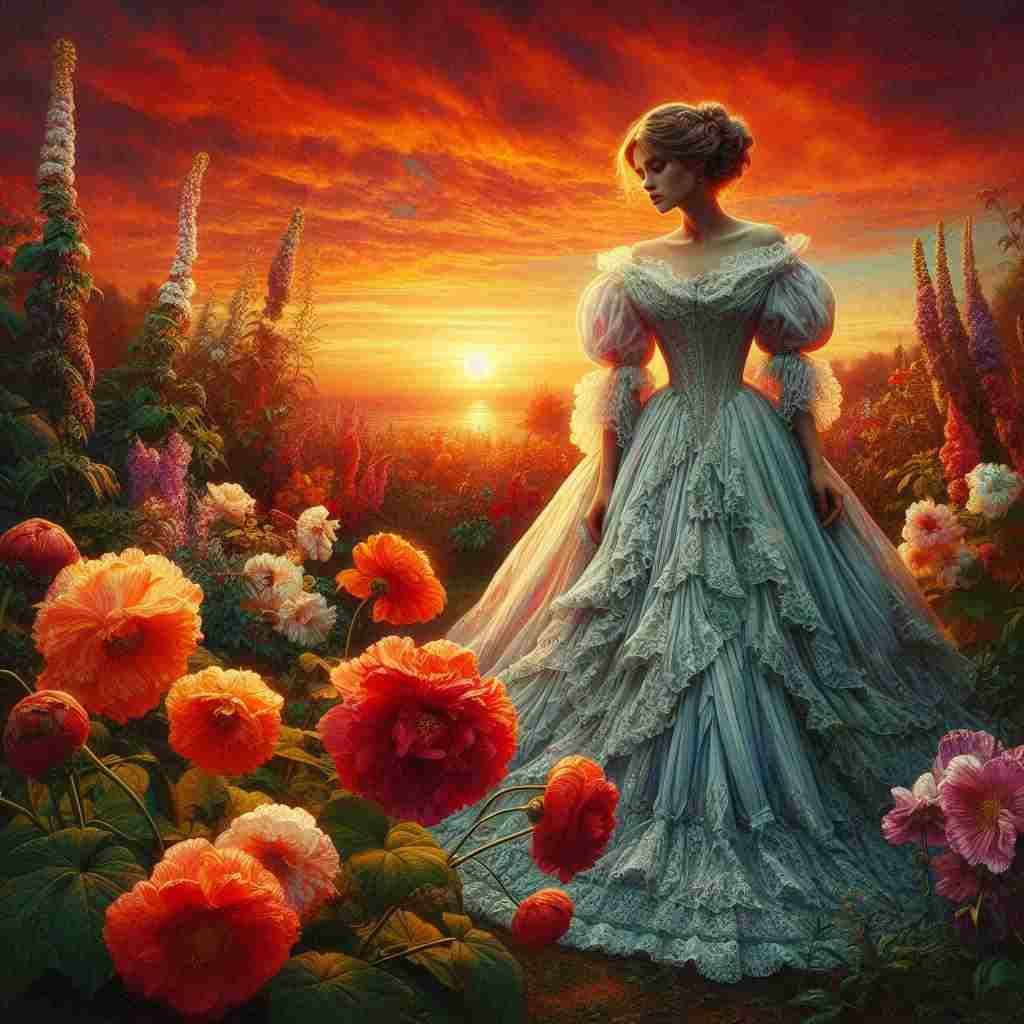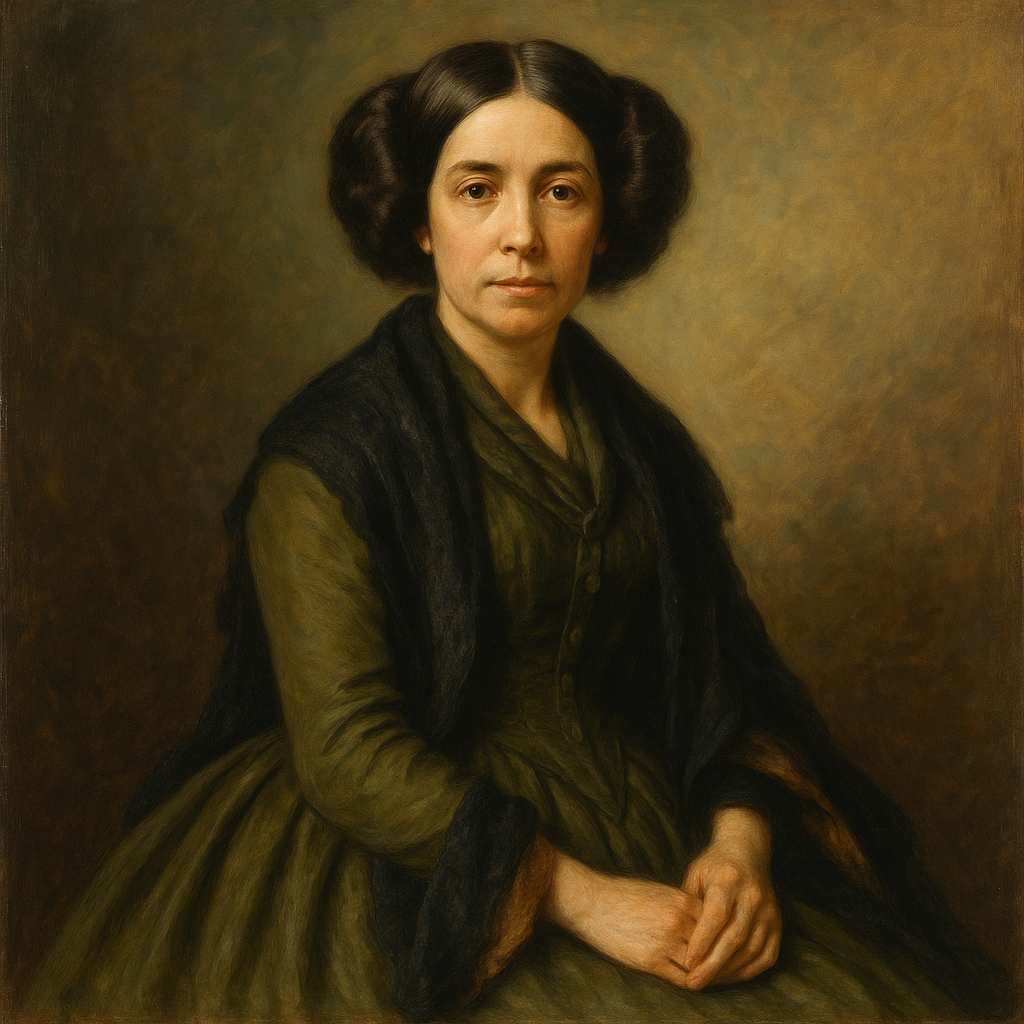Friendship After Love
Ella Wheeler Wilcox
1850 to 1919

After the fierce midsummer all ablaze
Has burned itself to ashes, and expires
In the intensity of its own fires,
There come the mellow, mild, St. Martin days
Crowned with the calm of peace, but sad with haze.
So after Love has led us, till he tires
Of his own throes, and torments, and desires,
Comes large-eyed friendship: with a restful gaze,
He beckons us to follow, and across
Cool verdant vales we wander free from care.
Is it a touch of frost lies in the air?
Why are we haunted with a sense of loss?
We do not wish the pain back, or the heat;
And yet, and yet, these days are incomplete.
Ella Wheeler Wilcox's Friendship After Love
Introduction
Ella Wheeler Wilcox's "Friendship After Love" is a poignant exploration of the emotional landscape that follows the end of passionate romance. This sonnet, with its rich imagery and contemplative tone, invites readers to consider the complex interplay between love's fiery intensity and the quieter, more subdued nature of friendship. Through a careful analysis of the poem's structure, language, and thematic elements, we can uncover the depths of Wilcox's meditation on human relationships and the bittersweet transition from romantic love to platonic affection.
Structural Analysis
The poem adheres to the Petrarchan sonnet form, consisting of an octave (eight lines) followed by a sestet (six lines). This structure is significant, as it mirrors the emotional journey described within the verse. The octave presents the initial situation and sets up the central metaphor, while the sestet offers a turn or volta, shifting the focus to reflection and a new perspective.
Wilcox's use of the Petrarchan form is particularly apt given the poem's subject matter. Traditionally used to express unrequited love or to idealize the beloved, here it serves to examine the aftermath of love—a clever subversion of the form's conventions. The rhyme scheme (ABBAABBA CDCDEE) provides a musical quality to the verse, enhancing its emotional resonance and guiding the reader through the progression of ideas.
Imagery and Metaphor
The poem opens with a powerful extended metaphor comparing the passing of passionate love to the transition from summer to autumn. The "fierce midsummer all ablaze" evokes the intensity and heat of romantic love, while the subsequent "mellow, mild, St. Martin days" represent the calmer state of friendship that follows. This seasonal metaphor is particularly effective in conveying the natural progression of relationships, suggesting that the change from love to friendship is as inevitable as the turning of the seasons.
Wilcox's choice of "St. Martin days" is noteworthy, referring to St. Martin's summer, a period of unseasonably warm weather in autumn. This allusion adds depth to the metaphor, hinting at the lingering warmth of past affection in the cooler climate of friendship. The imagery of fire—burning, ashes, and intensity—further reinforces the all-consuming nature of romantic love, contrasting sharply with the "calm of peace" that characterizes friendship.
Personification and Characterization
Love and friendship are personified in the poem, giving these abstract concepts tangible qualities. Love is portrayed as a leader who "has led us, till he tires / Of his own throes, and torments, and desires," painting a picture of a passionate but ultimately exhausting guide. This characterization of love as something that burns itself out aligns with the fire imagery established earlier in the poem.
In contrast, friendship is presented as a "large-eyed" figure with a "restful gaze," beckoning the speakers to follow "across / Cool verdant vales." This serene depiction emphasizes the tranquility and ease of friendship compared to the turbulence of romantic love. The use of "large-eyed" suggests wisdom and understanding, implying that friendship offers a broader, more clear-sighted perspective on life and relationships.
Tonal Shift and Ambivalence
As the poem progresses from the octave to the sestet, there is a subtle but significant shift in tone. The initial description of friendship seems wholly positive, offering respite from the exhausting nature of romantic love. However, the sestet introduces a note of ambivalence and questioning. The line "Is it a touch of frost lies in the air?" suggests a creeping sense of coldness or loss, despite the apparent peacefulness of the new state.
This ambivalence is further emphasized in the rhetorical question, "Why are we haunted with a sense of loss?" The use of "haunted" is particularly evocative, implying that the memory of passionate love lingers like a ghost, affecting the present experience of friendship. This sense of incompleteness, articulated in the final line, "And yet, and yet, these days are incomplete," captures the complex emotions that often accompany the transition from romantic love to friendship.
Thematic Exploration
At its core, "Friendship After Love" grapples with the theme of emotional evolution and the nature of human connection. Wilcox suggests that while the intensity of romantic love may be unsustainable, its absence leaves a void that friendship, for all its virtues, cannot entirely fill. This nuanced perspective acknowledges both the value of friendship and the unique place that romantic love occupies in human experience.
The poem also touches on themes of nostalgia and the passage of time. The speakers do not wish for the return of "the pain... or the heat" of love, yet they are acutely aware of something missing in their current state. This paradox speaks to the human tendency to romanticize the past while simultaneously recognizing its challenges—a sentiment that resonates across generations and cultures.
Language and Diction
Wilcox's choice of language throughout the poem is carefully crafted to support its themes and emotional journey. The diction in the octave is rich with words conveying intensity and transformation: "fierce," "burned," "expires," "intensity," "fires." This gives way to a softer, more muted vocabulary in the sestet: "mellow," "calm," "restful," "cool." This shift in language mirrors the emotional transition being described.
The use of alliteration, such as "mellow, mild" and "calm of peace," creates a soothing rhythm that reinforces the sense of tranquility associated with friendship. Conversely, the hard consonants in "torments, and desires" emphasize the harshness of love's more difficult aspects.
Contextual Considerations
While analyzing "Friendship After Love," it's important to consider Ella Wheeler Wilcox's place in literary history. As a popular poet of the late 19th and early 20th centuries, Wilcox was known for her accessible, emotionally direct style. This poem exemplifies her ability to tackle complex emotional subjects in a way that resonates with a broad audience.
The poem's exploration of the transition from romantic love to friendship also reflects changing attitudes towards relationships in Wilcox's time. As societal norms around courtship and marriage were evolving, the idea that a deep friendship could follow a romantic relationship was becoming more accepted and even valued.
Conclusion
"Friendship After Love" stands as a testament to Ella Wheeler Wilcox's poetic craftsmanship and her keen insight into the human heart. Through its carefully structured form, vivid imagery, and nuanced exploration of emotion, the poem offers a meditation on the nature of love and friendship that continues to resonate with readers today.
The sonnet's power lies in its ability to capture the complexity of human relationships, acknowledging both the relief and the sense of loss that can accompany the transition from romantic love to friendship. By leaving the reader with a sense of incompleteness, Wilcox invites us to reflect on our own experiences of love and friendship, and to consider the value and limitations of each.
Ultimately, "Friendship After Love" reminds us that our emotional lives are rarely simple or straightforward. It suggests that while the passionate fires of romantic love may not be sustainable, they leave an indelible mark on our hearts and memories. In doing so, the poem offers a poignant commentary on the human condition, celebrating the enduring value of connection in all its forms while acknowledging the bittersweet nature of change and emotional evolution.
This text was generated by AI and is for reference only. Learn more
Want to join the discussion? Reopen or create a unique username to comment. No personal details required!



Comments
No comments yet. Be the first to comment!